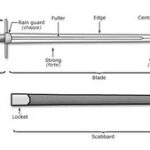The mandolin’s high tones can make any bluegrass, country, or even rock recording come alive, because there aren’t a whole lot of instruments in that higher space of a song. This is a double-edged sword, though: when the mandolin is out of tune, everybody knows it, and it sounds terrible.
For this reason, if your mandolin has tuning issues, it’s best to get them fixed right away. Here’s a look at a few of the common reasons why a mandolin won’t stay in tune.
1. Poor Stringing / Tuning – Let’s start with the basics. If you’d used too much string or too little string when you’d last strung your mandolin, that may be the cause of the issue. Don’t despair, it happens to everybody. There should be a few winds of string on the mandolin’s tuner, not so many that the string crosses over itself or so few that the string is barely hanging on, because in either of these cases the normal pressure created when you play the mandolin will throw it out of tune. As with all common stringed instruments, you should also be sure that you’re tuning your mandolin up to notes and never down; tuners lock correctly when tuned up, so if you’re sharp over a note, gently pull the strings to get it down to a pitch or go below the note and tune up again.
2. Old Strings – Old strings can also cause tuning issues. A good time to replace mandolin strings is at the first showing of rust, or if you notice a rusty smell or bad tone from the strings. Replacing the strings often will avoid other possible issues, so it’s a good habit to get into. Try to use light or medium gauge mandolin strings, especially if you’ve got an inexpensive model, because heavier gauge strings can create an unnecessary pull that eventually can damage the mandolin’s neck.
3. Construction Issues – A number of construction issues can cause a mandolin to repeatedly fall out of tune. Obviously, cheap tuners can be one source of problems. If you suspect an issue, check to see if the tuners wiggle around a bit, and if so use a small screwdriver to tighten them, if possible, or consider replacing them entirely. A bad neck is another big source of tuning issues. If the mandolin notes seem to shift up in pitch when pressure is applied to the neck (even in normal fretting), then you’ve got a neck issue that needs to be treated by a music shop. You should also regularly test your mandolin’s intonation by checking each string’s notes at the twelfth fret and played open and make sure that they’re both equally in tune. If they aren’t, you may have bridge or neck problems that a music store can help you handle. A good time to check intonation is a few hours after restringing your mandolin.
Do you know of any other reasons that a mandolin may not stay in tune? Post in our comments section below.







